Research
My main research interests is primarily based on observational studies of galaxy formation and evolution at varying cosmic epochs from \(z \sim 0.4\) up to \(z \sim 9\). More specifically, my research focuses on investigating how star-forming galaxies formed and evolved from low- to high-z with the main objectives of: 1) understanding how star-formation occurred (e.g., steady/bursty SF histories); 2) how cold gas conditions changed (e.g., varying ISM conditions); and, 3) how internal (e.g., stellar winds, AGN feedback) and external (e.g., halo quenching, environment) mechanisms influenced the way star-formation happened. Investigating star-formation activity in galaxies is crucial in understanding how they formed and grew to become the present-day large structures. My main research is done via a combination of narrowband surveys, broadband color excesses, and spectroscopic follow-up/archival work.
Recently, I am interested in studying Extreme Emission Line Galaxies which are one of the most intense, bursty star-forming galaxies at any cosmic epoch enabling investigations of extreme conditions. I am also interested and currently developing large spectroscopic archives and datasets which would have legacy value for the community and further my own research by utilizing past (mostly unused) data to enable new science.
Below is a list of various topics that I have worked and am currently working on. Click on each post to see a dedicated webpage for each project and feel free to contact me directly if you have any questions and/or want to collaborate ;)
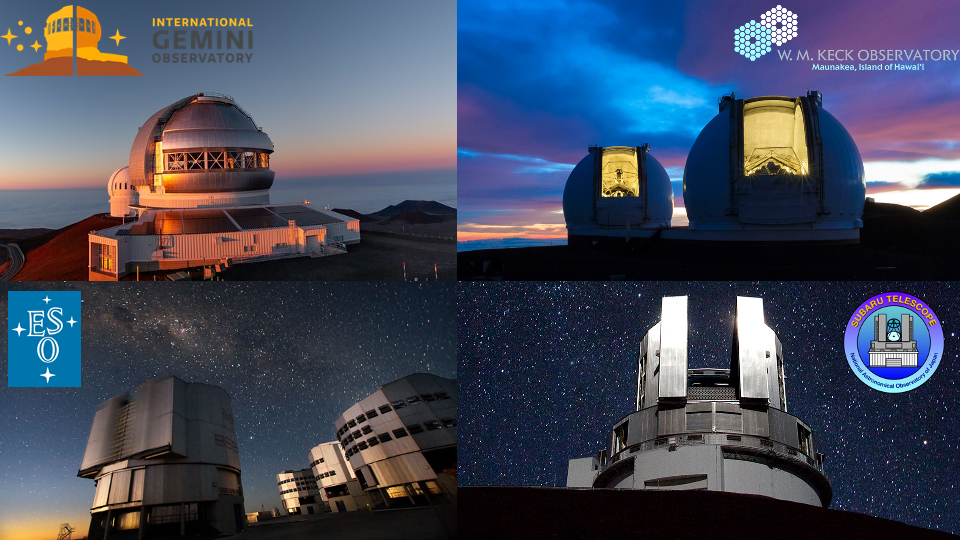
Public COSMOS Spectroscopic Archive
I am leading the gathering and processing of all spectroscopic data taken in the COSMOS field over the past 10 - 15 years with goal being to create a legacy product and data visualization tools for the community. Continue reading Public COSMOS Spectroscopic Archive
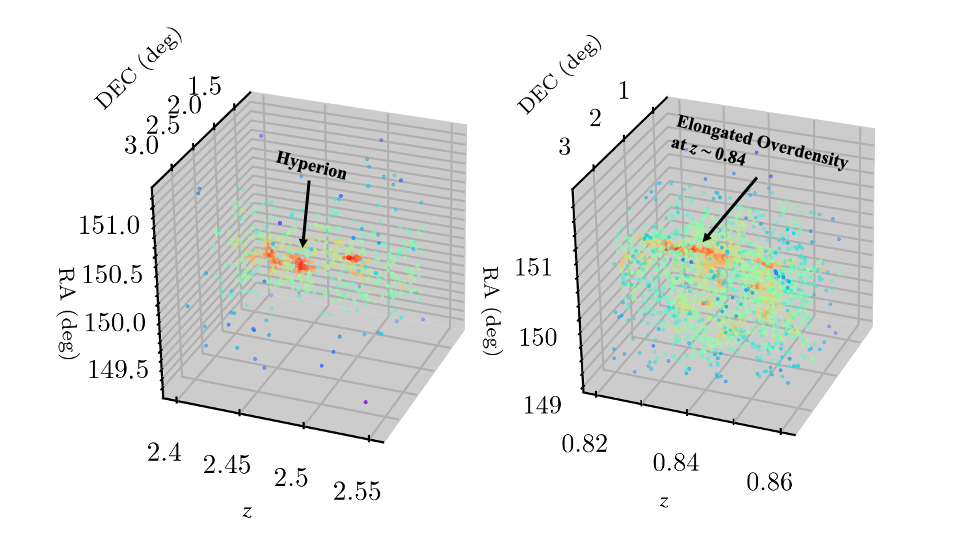
COSMOS Spectroscopic Redshift Compilation
I am leading a compilation of all published spectroscopic redshifts in the COSMOS field. This has legacy value for the community as such compilations can be used for a multitude of reasons from photo-\(z\) calibrations and contamination assessments to follow-up studies with other facilities. The compilation will be made public when the survey paper (led by me) is published (expected 2024). Continue reading COSMOS Spectroscopic Redshift Compilation
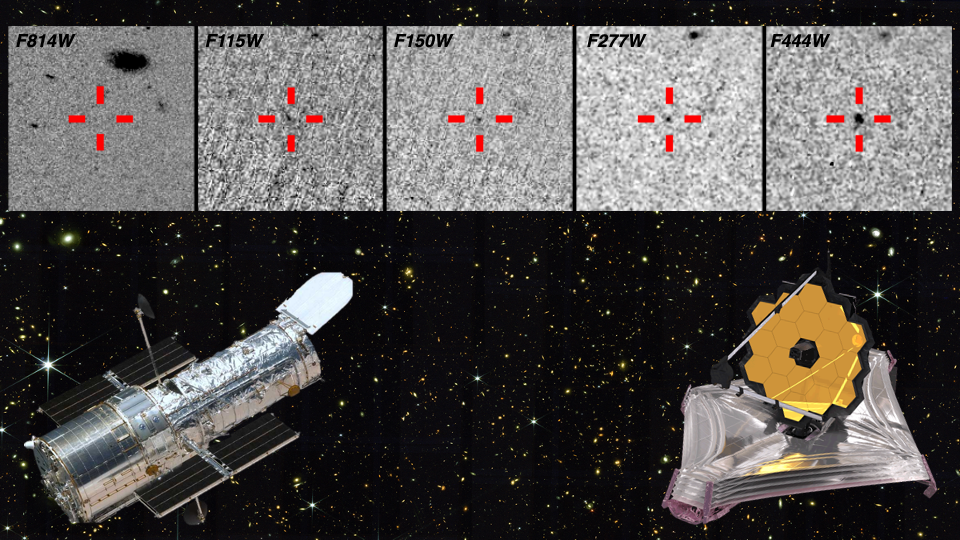
Extreme Emission Line Galaxies at Epoch of Reionization
Utilizing the power of JWST NIRCam imaging to find some of the most extreme star-forming galaxies in the Early Universe. Continue reading Extreme Emission Line Galaxies at Epoch of Reionization
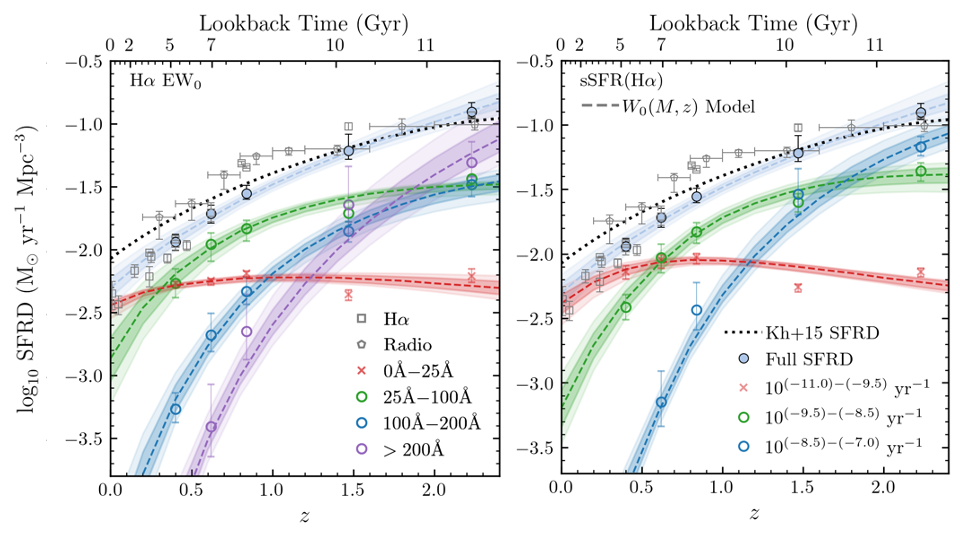
Extreme Emission Line Galaxies at z ~ 0.4 - 2.2 and Equivalent Width Evolution
I led several studies on how equivalent width distributions (tracers of star formation histories) evolves with redshift and specifically focused on high EW (Extreme Emission Line Galaxy) sources. Continue reading Extreme Emission Line Galaxies at z ~ 0.4 - 2.2 and Equivalent Width Evolution
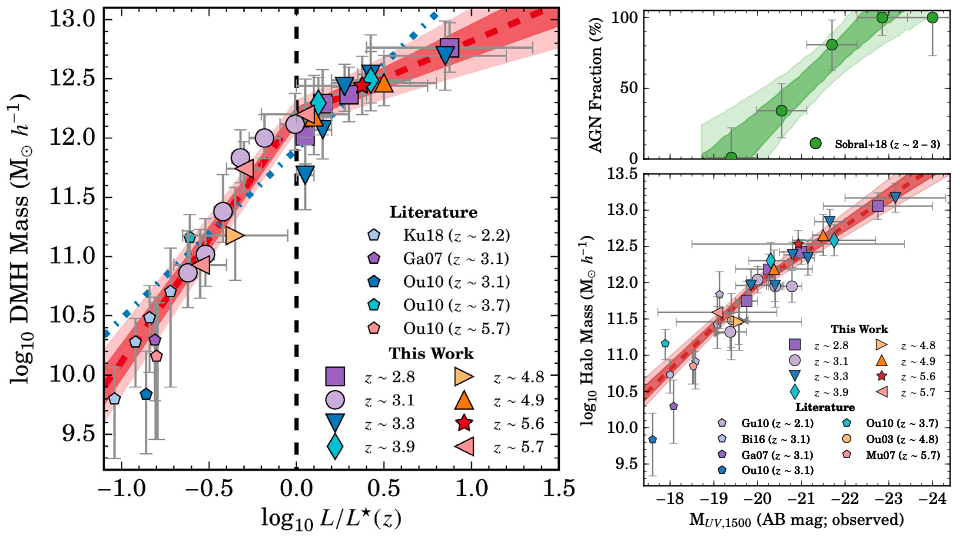
Star Forming Galaxies and Host Dark Matter Halos
I led studies on galaxy - galaxy clustering of emission line selected galaxies up to \(z \sim 6\) finding a strong, redshift-independent correlation between host halo mass and emission line luminosity independent of line selection with evidence of a transitional halo mass at \(L > L^\star\). This highlights the important role that host halos could have in regulating cold gas accretion resulting in star formation and strong nebular emission lines. Continue reading Star Forming Galaxies and Host Dark Matter Halos
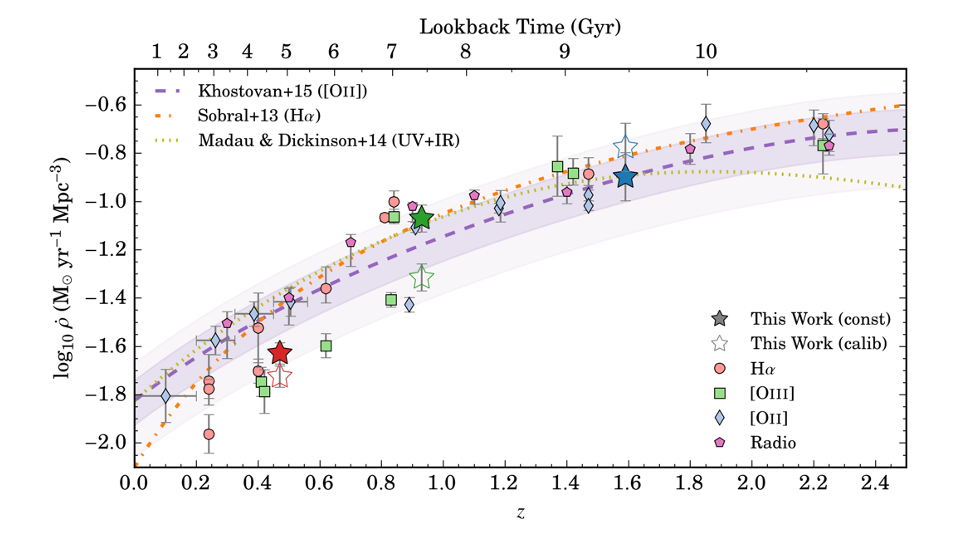
Cosmic Star Formation History & Stellar Mass Build-up
Constraints on cosmic star formation history is crucial to map out how typical galaxies build-up their stellar mass and grew to become the structures we see today. I led 3 investigations measuring the cosmic star formation rate density and stellar mass density evolution up to \(z ~ 5\). Continue reading Cosmic Star Formation History & Stellar Mass Build-up
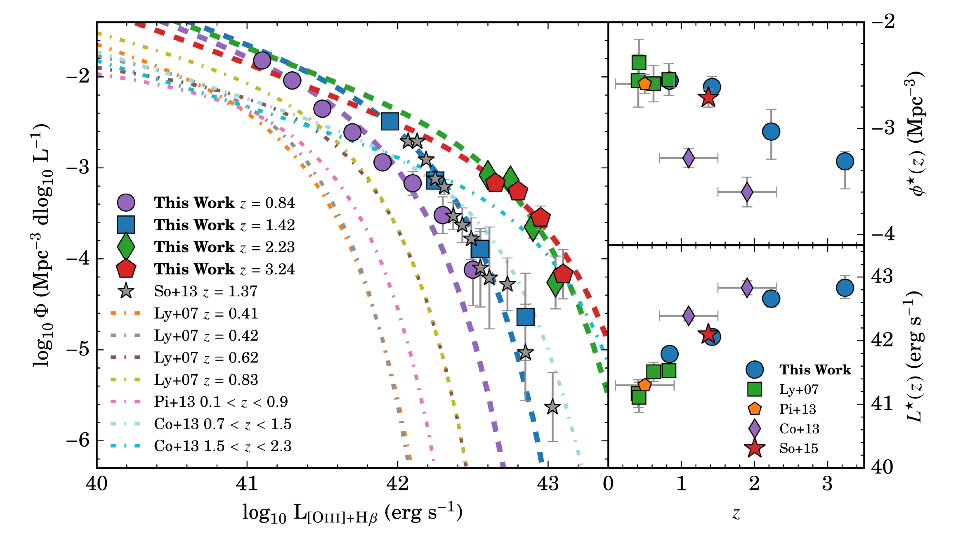
Emission Line Luminosity and Stellar Mass Functions up to z ~ 5
An overview of projects I led in selecting and analyzing large emisison line galaxy samples to constrain key statistical distributions. Continue reading Emission Line Luminosity and Stellar Mass Functions up to z ~ 5
